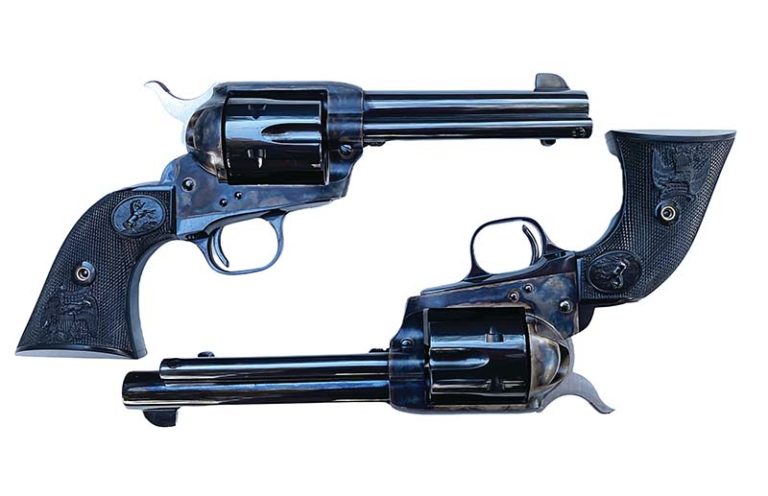
Testing Single Action Army clones, replicas and look-alikes against Colt's original.
The Colt Single Action Army is arguably the most culturally significant firearm in the American story. The gun was, surprisingly, not made in what we could call significant numbers. It’s estimated that Colt’s production of the gun stands today at about a half-million (for reference, Glock has passed 20 million), certainly not a number that should allow it such deep meaning in the great American story considering just how many competitions it had in its time.
Even today, it has competition in the form of clones and copies, arguably more of those have been made than by the Colt company. Since real Colts are often not shot or are considered collector’s items, it’s prudent to examine two new guns and see how they stack up to the competition—and older SAAs from Colt itself.
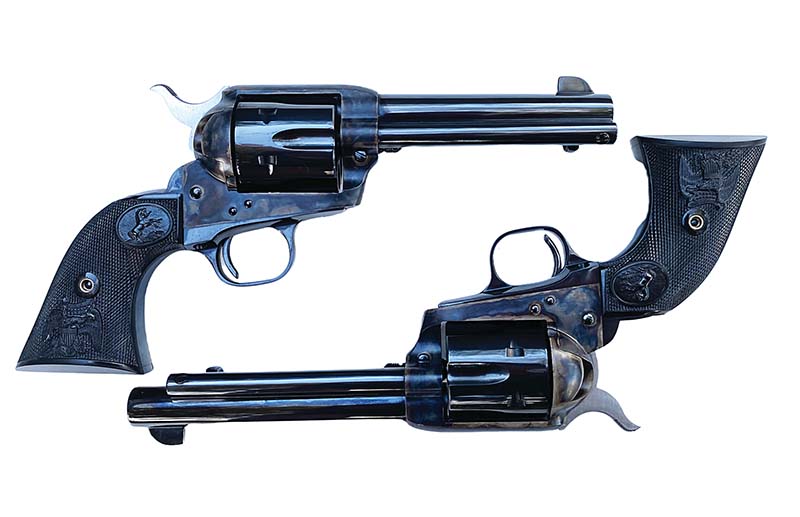
Does A Colt Shoot Better Than The Rest?
I’ll cut right to the chase when it comes to my personal experience with the SAA. I’ve shot no small number of Single Action Army clones and replicas. The bulk are very fine guns in their own right, some are exceptional shooters and others are exceptional just lying there not being fired. I’ve yet to find a single replica out there that, in terms of materials and accuracy, is the equal of a real Colt SAA.
In my direct experience—thousands of rounds and ranges exceeding 200 yards—have shown me that Colt SAAs are, on average, substantially more accurate than any replica. My average accuracy loads for the .45 Colt have changed a bit over the years, but I’ve recently been using Rim Rock Bullets for my cast loads. These bullets are exceptionally accurate, and I’ve taken a shine to the 255-grain SWC sized at .452 inch. This gets me just shy of 900 fps in a 5.5-inch Colt. My lifetime bench accuracy with Colts is about 2.5 inches at 25 meters, replicas are 4 to 5 inches across the board in group shooting. I never expect a replica to group well on paper as a result or shoot to point of aim, which is a large issue.
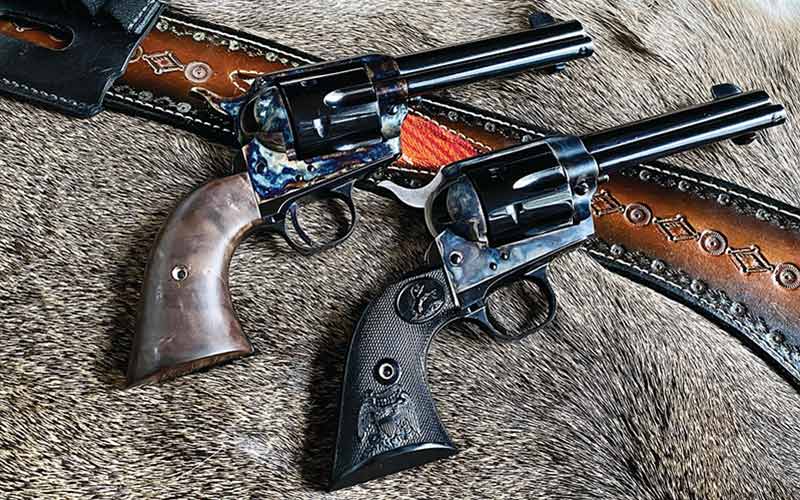
I load my ammo with seating and crimping as two separate operations—some people just use the seating die to crimp. When loading revolver rounds, I like the Lee Factory Crimp Die to manually set the case mouth into the crimp grooves on my bullets. Some people will strongly disagree with me on this, but in my time with cast bullets, I’ve found this uniforms the cartridge far better, and I’ve seen groups tighten.
Many people out there will slug their barrels to determine the best bullet diameter (I know some of my guns shoot much better with .454-inch bullets than they do .452 inch), but there’s a certain economy of scale where I prefer all my guns to shoot well with one or two loads than to have each gun shoot a bit better with a specific load. Again, this is personal preference and I’ve had some that’ll group tighter than a modern match pistol, but I’ll take a 2.5-inch average if I only have to keep one bullet in stock and plan accordingly.

Point Of Aim Vs. Point Of Impact
This is the most important issue I’ve seen in my time with these guns. The SAA has no adjustable sights. Adjusting your point of impact is no easy feat, and it’s really best left to a gunsmith because you’re going to have to remove metal on the sight for elevation, or have a smith adjust your barrel in a vice to manually turn it to move windage.
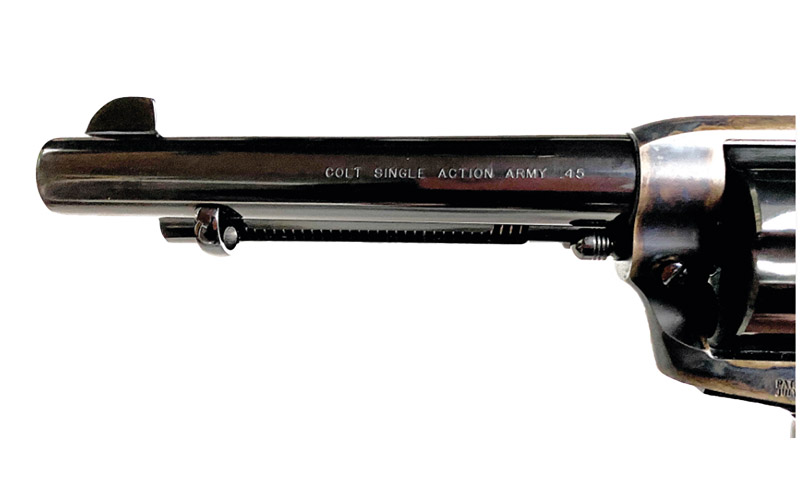
Virtually all Colts I’ve shot shoot point of aim at 25 meters, and if they don’t, they are damn close. Most replicas aren’t so lucky. The only one I’ve had shoot point of aim at this distance was the Standard Manufacturing Single Action Revolver, though it wasn’t as accurate on paper by a noticeable margin. I’ve had three replicas from one manufacturer shoot to three different zip codes with the same ammo. With my Colts, I’ve been able to easily tailor loads to shoot to point of aim. Sometimes I have to sacrifice bullet weight or adjust speed, but I’ve never had a Colt that I’ve failed to reliably hit an IDPA silhouette with at 300 yards.
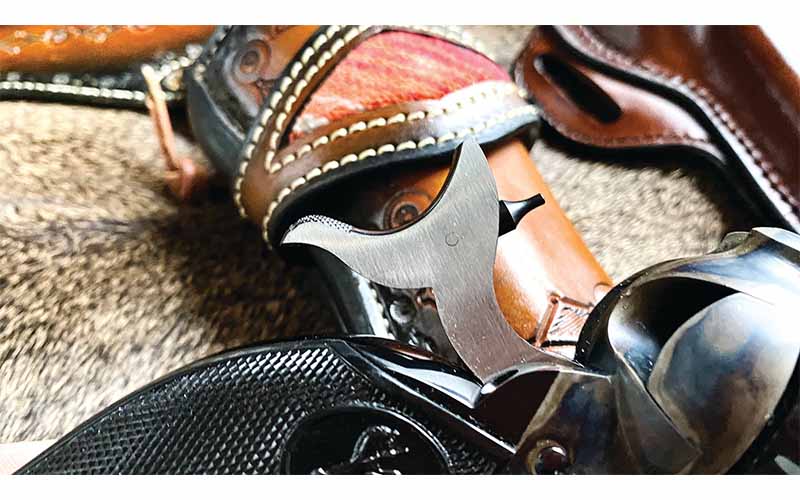
I read Elmer Keith as a kid. I thought it was normal to try to hit plates at long range with a revolver after I spent my time reading Sixguns and Sixgun Cartridges and Loads. It’s the definition of fun: waiting for that steel to ring after what seems like an hour of flight time.
The thing that disappoints me on the replicas is that many are what I’d call “cosmetic clones,” in that the functional elements of accuracy are all over the map—or ignored entirely. Sight blade height is a main culprit, as are varied dimensions in barrel alignment and cylinder gap. If you want to be an SAA shooter, whether originals or clones, you need to be a hand-loader. There’s just no way around it; you need the ability to tailor your ammo and even bullet diameters.
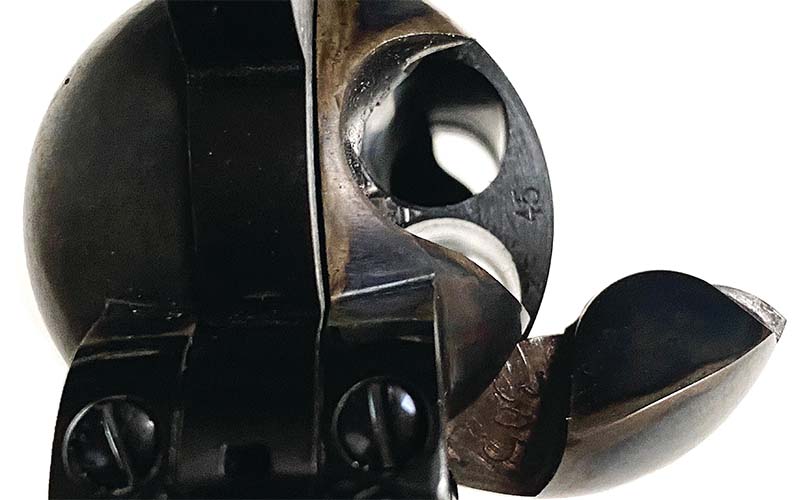
The Modern Model P
While I have lots of experience with older Colts, I wanted to make sure my assertions were correct for the ones made today. There’s a good deal of frowning from Colt collectors when it comes to anything “Gen 3” or beyond, but I don’t think its warranted.
Colt sent me two brand-new SAAs, one a 4¾-inch and the other a 5.5-inch. Both are chambered in .45 Colt. I decided not to slug the guns and instead opted for using my accuracy loads that Keith recommended in his old works. Some of the advice I take loading this ammo is almost a century old, and it works well even now. Sure enough, I took the new Colts out with my trusted handloads and both printed 2 inches high at 25 meters, the 5.5-inch grouping slightly better at 2 inches.
What separates the Colt SAA revolvers from the replica competition is more what the Colts don’t have. These guns are raw from the factory, no modifications or the like. The trigger pull is crisp, but surprisingly heavy. Cocking the hammer isn’t a chore, however it’s much stiffer than many of the tuned replicas.
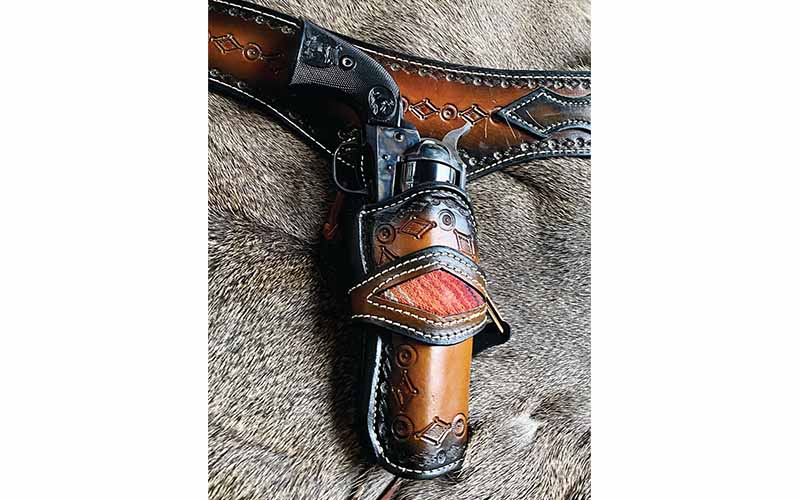
An old mentor of mine once told me that, when I got my first Colt, that I needed to leave it alone. In his words, “The only ‘tune’ should be four clicks spelling out C-O-L-T.” I see no reason to modify my new Colts anyway; they’re impressively accurate.
If you go this route with getting a new Colt, you won’t be disappointed. The thing is you need to go out and shoot it. The benefit of Colt guns, especially the revolvers, is that the little pony stamped on the side essentially guarantees your value will never depreciate. People pay good money for Colt guns. Even after shooting them, they’re still valuable. I hear guys get a Colt as a cherry on top of their collection and that the replicas are their “shooters.” I disagree with this. Buy silver and gold if you’re just going to leave in the safe.
Notes On Great Single Action Army Clones
There are some absolutely extraordinary guns out there that rival the Colt, many of which can share parts with it.
The general bulk of SAA production today occurs in Italy. I’ll wager there have been more Italian copies made than Colt originally produced, and most of these are fine guns. The best-quality Single Action Army clones are by Taylor’s & Co. I’ve found over testing and time that the Taylor’s guns are made to an impeccable standard, and their tuning service is second to none. Some of their guns climb in price as you go up in features, but they’re still a savings compared to a Colt.
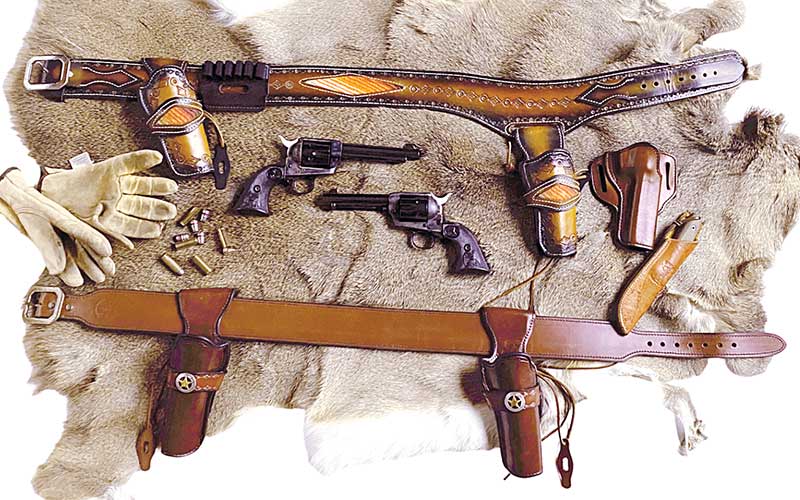
In complete honesty, the only thing I’ve seen on Taylor’s guns I don’t like has been point of impact. All Taylor’s guns I’ve shot shoot straight for windage and average 3 to 4 inches at 25 meters out of the box with factory loads. I love that. However, most shoot low. You can file the sight blade, but you need to be absolutely sure on the load you settle on first before you make that change. Overall, for the cost, I’d strongly recommend Taylor’s if you want to modify your gun or shoot in specific disciplines that favor high-speed features.
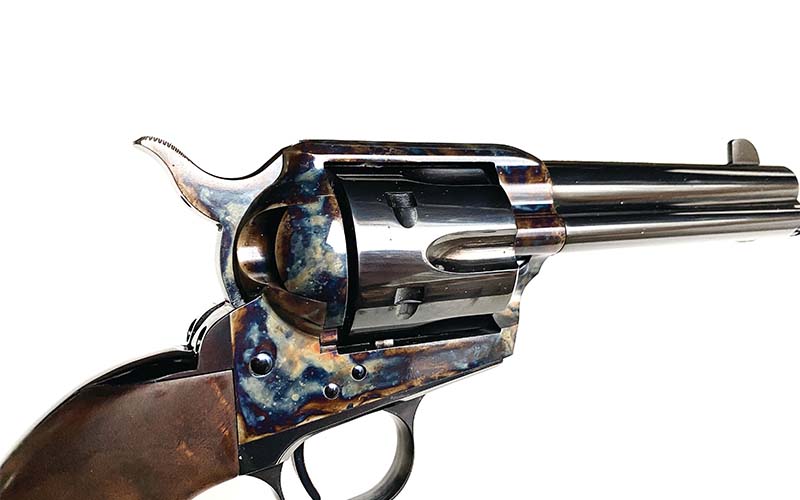
Another brand I really like is Standard Manufacturing. They made a very beautiful SAA copy that boasts the finest in modern materials and machining. I’m very impressed with the attention to detail and parts fit. It’s slightly different in a couple places as compared to a Colt, especially in the hammer and firing pin geometry. The action isn’t advertised as “tuned,” but it’s far more akin to a custom competition action than a direct replica. You have to listen for the four clicks, but they’re there.
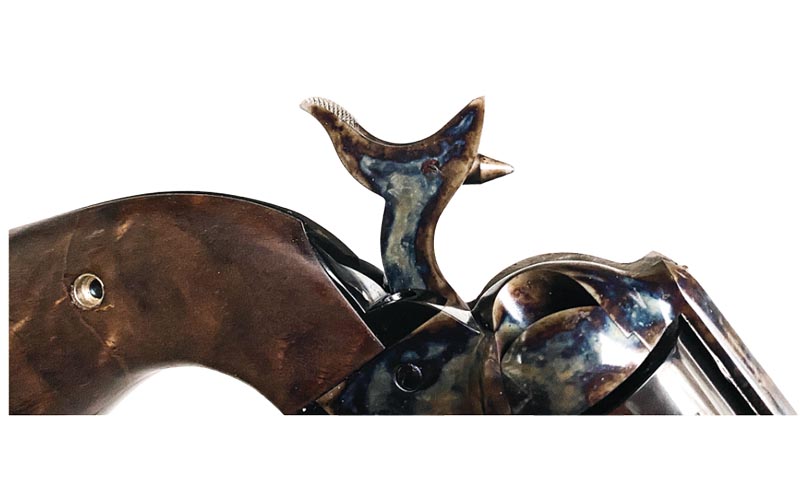
This gun shoots point of aim at 25 meters and is able to print 3-inch groups at that distance easily. Overall, it’s a wonderful, well-made gun that should last a lifetime. It is, of interest, more expensive than a Colt at MSRP for the base mode.
Lastly, I need to talk about the Ruger New Vaquero. This isn’t a Colt Single Action Army clone in any way, except in cosmetics. It is, however, a modern gun in internal design and allows for some added safety features and reduced overall cost. Most guns of this model shoot high as far as I’ve seen, and I don’t like that very much for close distance. I really do love the New Vaquero at 100 yards on plates; it’s almost like Ruger zeros them for a 250-grain bullet at that range.
Editor's Note: This article originally appeared in the February 2022 issue of Gun Digest the Magazine.
More Historical Firearms:
- Going the Distance with the Sharps Rifle
- Colt Single-Action Army: Owning The Enduring Legend
- Classic Guns: Winchester Model 1897 Pump-Action Shotgun
- 10 Guns From The Old West You’ve Got To Know

Next Step: Get your FREE Printable Target Pack
Enhance your shooting precision with our 62 MOA Targets, perfect for rifles and handguns. Crafted in collaboration with Storm Tactical for accuracy and versatility.
Subscribe to the Gun Digest email newsletter and get your downloadable target pack sent straight to your inbox. Stay updated with the latest firearms info in the industry.

![Best Concealed Carry Guns In 2025 [Field Tested] Wilson Combat EDC X9S 1](https://gundigest.com/wp-content/uploads/Wilson-Combat-EDC-X9S-1-324x160.jpg)


![Best 9mm Carbine: Affordable PCCs [Tested] Ruger Carbine Shooting](https://gundigest.com/wp-content/uploads/Ruger-Carbine-Shooting-100x70.jpg)
![Best AR-15: Top Options Available Today [Field Tested] Harrington and Richardson PSA XM177E2 feature](https://gundigest.com/wp-content/uploads/Harrington-and-Richardson-PSA-XM177E2-feature-100x70.jpg)

One of the WORST article I’ve ever read in a supposed GUN magazine.
I thought it was going to be about the Colt and the clone available and which ones were great and which ones weren’t. Instead we get an article that’s talking about point of aim, hand loads, ammo, and so forth. He gave maybe 1 paragraphs about clones. There are dozens of different clones and this clown ignored them all.
Now I know not to waste my time coming here thinking I’m going to learn something about GUNS.
An above poster is correct as for the cone firing pin which was used by Colt until circa 1960-1961, I had a 1958 SAA.with same pin.
The problem with Italian guns is much more.extensive use of castings including hammer with integral bolt cam, instead of Colt replaceable cam.
The Italian guns have also historically used a softer high lead content steel for easier/cleaner machinining. At least a bright spot on Italian guns is far better quality than of old. Twenty/thirty years back it was not uncommon to get an Italian gun where chambers were off-center to bore and they simply elongated the chamber mouth into an egg shape and sent it out the door.
For those looking for an “affordable” Colt shooter, the 2nd Gen 1971 NRA Centennial commemorative has only a lightly (and generally faded by now) gold washed script on left of barrel reading “1871 NRA Centennial 1971″, Colt’s PTFA etc moved from that position to top of barrel, an NRA-prefix SN, and NRA medallions rather than Colt in cocobolo grips, to differentiate it from any standard b/cc Colt SAA…they are meant to be display pieces so lockwork may not be timed as well as it should be, but can be brought to standard by an additional $200-$300, and a little-fired such example I recently purchased and had worked over by Allan Harton for $250 initially set me back the same I paid for a new Ruger Alaskan, currently $1200. It has typical .456 throats and .452 groove, and shoots 1.5″-2” groups at 25yds with commercial hard cast SWC. It likely would do better with my 1:20 soft RNFPs at .454, but I prefer the SWC for all purpose use at 950-1000fps with 9grs Herco, safe for any post-1900 SAA, much less a post-WWI steel Colt.
Neglected to mention above 255gr SWC commercial hard cast sized .453-.454 depending on their alloy and after-cast/lube shrinkage, but certainly not .452 in .456 throats…
And those larger throats likely came about at the time they certified their guns safe for smokeless, circa 1900-1906, the larger throat reduces pressure and smokeless of the time was unpredictable in pressure, and they simply kept doing the same when everybody else adopted the 1911 bore diameter…..prior to that, their chamber mouths were tighter than bore diameter, both working fine with the hollowbase bullets which were all there were until casting at home and .45ACP jacketed bullet diameters became fashionable.
You don’t mention who makes the Taylor’s guns. Usually they are Uberti or Pietta of which I have one and two. The both go to the trouble of making one piece stocks like Colt used to long ago. All three are tight and shoot better than me. I’ve never been able to shoot anything into two inches at 25 yards, even my CZ Shadow with red dot, and find it hard to believe anyone can regularly without being in a Ransom Rest. My buddy has a late Gen 2 Colt and I just can’t see or feel a difference. I do know the plastic or rubber grips on the Colt hurt my hands where the raised eagle is.
They both go to….
Mr. Jones, shooting 1″ groups at 25yds using only a pack under forearms with an accurate revolver is something I formerly did quite consistantly, as well as bouncing drink cans at 100yds standing/unsupported. Nowadays the drink containers are at 50yds and getting under 2″ at 25yds is a good day. And it took no exceptional talent, only a lot of practice….I tell anyone who seems impressed by my shooting at the range to not be impressed, but instead to shoot through 250-500rds each weekend and they will likely shoot better than me.
I have an original Colt SAA with the odd firing pin. Again, it is original.